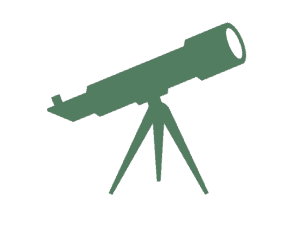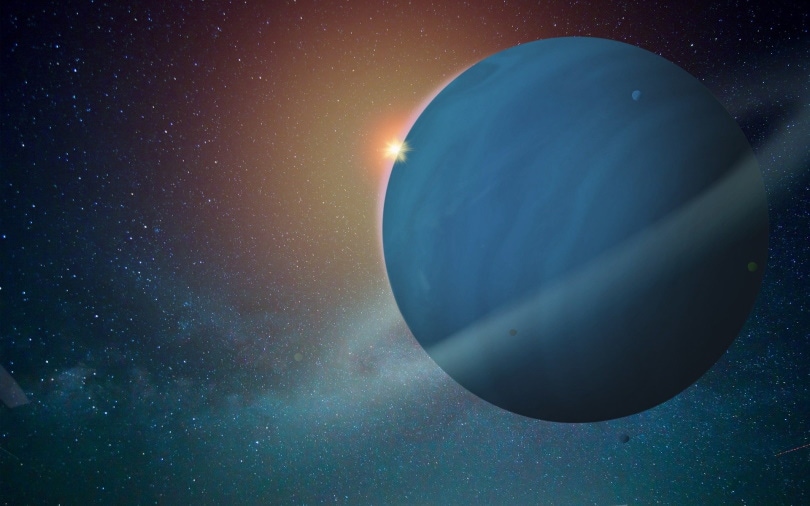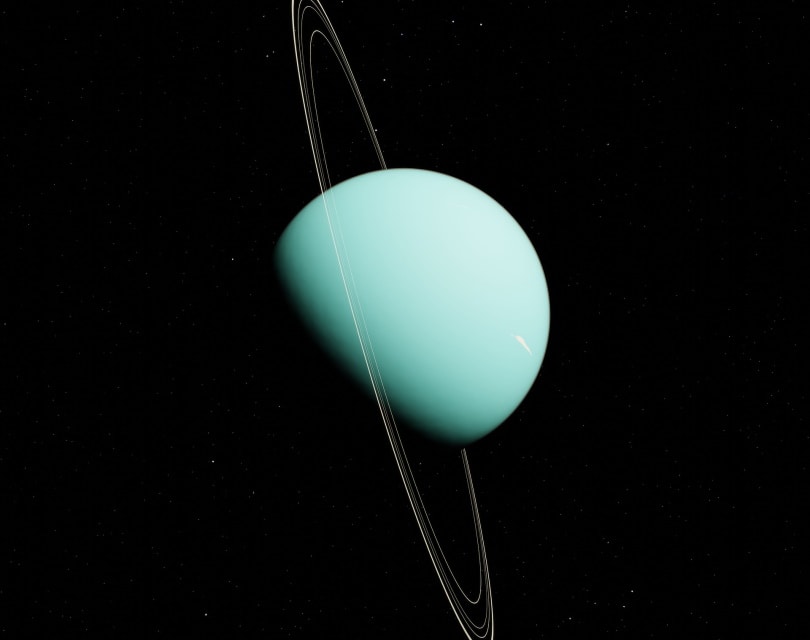How Far Is Uranus From the Sun?
Last Updated on

When it comes to the outer worlds, there’s little doubt that they’re extremely far away. Considering that Uranus is over three times the size of Earth, you might be wondering why it’s so hard to spot in a telescope.
The answer is because it’s far away — really far. But exactly how far is Uranus from the Sun? We’ll answer that question and more here.

Distance From Uranus to the Sun

As the seventh planet from the Sun, Uranus is not exactly close. But determining the exact distance between Uranus and the Sun is a bit of a moving target. That’s because like all planets, Uranus follows an elliptical path.
That means at some points, it’s closer to the Sun than at others. So, while Uranus averages a distance of 1.8 billion miles from the Sun, that distance can shrink to as little as 1.7 billion miles (its perihelion). Going the other way, the distance can grow to as much as 1.89 billion miles (its aphelion).
It takes a long time to stretch across those various distances. That’s because one year on Uranus is 84 Earth years, and it takes 42 years to go from aphelion to perihelion and back.
For perspective, the average distance the Earth is from the Sun is 93 million miles, which is a little over 18 times closer than Uranus.
How Long Does It Take Sunlight to Reach Uranus?

While light travels insanely fast, it’s not instantaneous. In fact, light travels 186,000 miles per second, so at distances like 1.8 billion miles, it takes a while to travel.
In fact, at its average distance, it takes light 2 hours and 41 minutes to reach Uranus. While that number can grow to 2 hours and 49 minutes at aphelion, it can shrink to 2 hours and 32 minutes at perihelion.
Once again, for perspective, it takes light 8 minutes and 30 seconds to reach Earth from the Sun. It’s not hard to see why Uranus is an ice giant!

Summary
With so many miles between the Sun and Uranus, it’s no wonder that it’s hard to spot the light that the cold planet reflects at us. But if you’re persistent, you can spot the planet when conditions are excellent and you’re using a top-notch scope.
While you might not get the most rewarding view, it’s worth the challenge, and you’ll likely spot a few more wonders along the way!
You might also be interested in:
Featured Image Credit: Vadim Sadovski, Shutterstock
About the Author Robert Sparks
Robert’s obsession with all things optical started early in life, when his optician father would bring home prototypes for Robert to play with. Nowadays, Robert is dedicated to helping others find the right optics for their needs. His hobbies include astronomy, astrophysics, and model building. Originally from Newark, NJ, he resides in Santa Fe, New Mexico, where the nighttime skies are filled with glittering stars.
Related Articles:
How to Clean a Refractor Telescope: Step-by-Step Guide
How to Clean a Telescope Eyepiece: Step-by-Step Guide
How to Clean a Rifle Scope: 8 Expert Tips
Monocular vs Telescope: Differences Explained (With Pictures)
What Is a Monocular Used For? 8 Common Functions
How to Clean a Telescope Mirror: 8 Expert Tips
Brightfield vs Phase Contrast Microscopy: The Differences Explained
SkyCamHD Drone Review: Pros, Cons, FAQ, & Verdict
